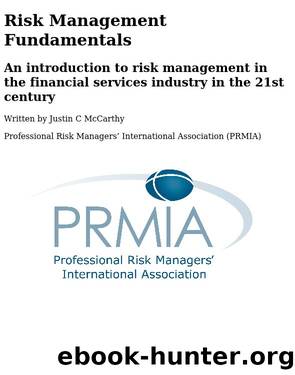Risk Management Fundamentals by Justin McCarthy

Author:Justin McCarthy
Language: eng
Format: epub
Publisher: Professional Risk Managers' Int'l Association
Published: 2023-02-13T00:00:00+00:00
Market liquidity is itself a significant area, and relates to markets, volumes of trading, and how prices are affected by the amount of a security being sold in a market. During the 2007-08 crisis, some financial markets seized, resulting in the inability to determine market prices. The focus is funding liquidity and how this affects the ability of a bank to meet obligations as they fall.
A best practice includes holding a pool of liquid assets that cushions against unexpected obligations or a sudden inability to source funds to meet expected obligations. After the 2007-08 crisis, this practice became a regulatory requirement and banks were expected to hold a fraction of their balance sheet in the form of liquid assets. The regulation expects that enough short-term liquid assets are held to match short-term, upcoming liabilities. This fraction is known as the liquidity ratio and is calculated by dividing liquid assets by short-term liabilities.
In a situation in which this liquidity pool must be called on, market liquidity risk and credit risk might come into play. Unexpected losses in the markets might result in an asset sell-off, driving prices down and resulting in yet more sell-offs. As more and more sellers chase a decreasing number of buyers, or in an extreme case, no buyers emerge at any price, what in normal times was a promising liquidity pool can be found to be of little use.
There can also be a contagion effect; if illiquid assets cannot be sold, a firm that needs to sell something might be forced to sell liquid assets instead, resulting in a fall in price of goods and liquid securities, and supply exceeding demand. As markets fall, confidence in market participants might also fall, resulting in reluctance of participants to lend to one another.
Sources of funding can influence overall liquidity management. A simple measurement of funding liquidity is the stability of funding sources. As described in section 2.2, traditionally, banks fund activities such as lending through deposits from customers. Over time, banks started to use other sources of funding such as certificates of deposits, federal funds, foreign deposits, repos, and many others to fund activities. These alternative funding sources have sometimes been placed under the title of wholesale funding.
Download
This site does not store any files on its server. We only index and link to content provided by other sites. Please contact the content providers to delete copyright contents if any and email us, we'll remove relevant links or contents immediately.
| Corporate Finance | Crowdfunding |
| Financial Engineering | Financial Risk Management |
| Wealth Management |
The Black Swan by Nassim Nicholas Taleb(7054)
Bad Blood by John Carreyrou(6581)
Pioneering Portfolio Management by David F. Swensen(6253)
Millionaire: The Philanderer, Gambler, and Duelist Who Invented Modern Finance by Janet Gleeson(4418)
Skin in the Game by Nassim Nicholas Taleb(4200)
Bullshit Jobs by David Graeber(4137)
The Money Culture by Michael Lewis(4130)
Skin in the Game: Hidden Asymmetries in Daily Life by Nassim Nicholas Taleb(3960)
The Wisdom of Finance by Mihir Desai(3693)
Blockchain Basics by Daniel Drescher(3538)
Liar's Poker by Michael Lewis(3413)
Fooled by Randomness: The Hidden Role of Chance in Life and in the Markets by Nassim Nicholas Taleb(3080)
Hands-On Machine Learning for Algorithmic Trading by Stefan Jansen(3041)
The Intelligent Investor by Benjamin Graham Jason Zweig(3010)
Mastering Bitcoin: Programming the Open Blockchain by Andreas M. Antonopoulos(3009)
The Power of Broke by Daymond John(2931)
Investing For Dummies by Eric Tyson(2920)
Market Wizards by Jack D. Schwager(2669)
Zero Hour by Harry S. Dent Jr. & Andrew Pancholi(2628)
